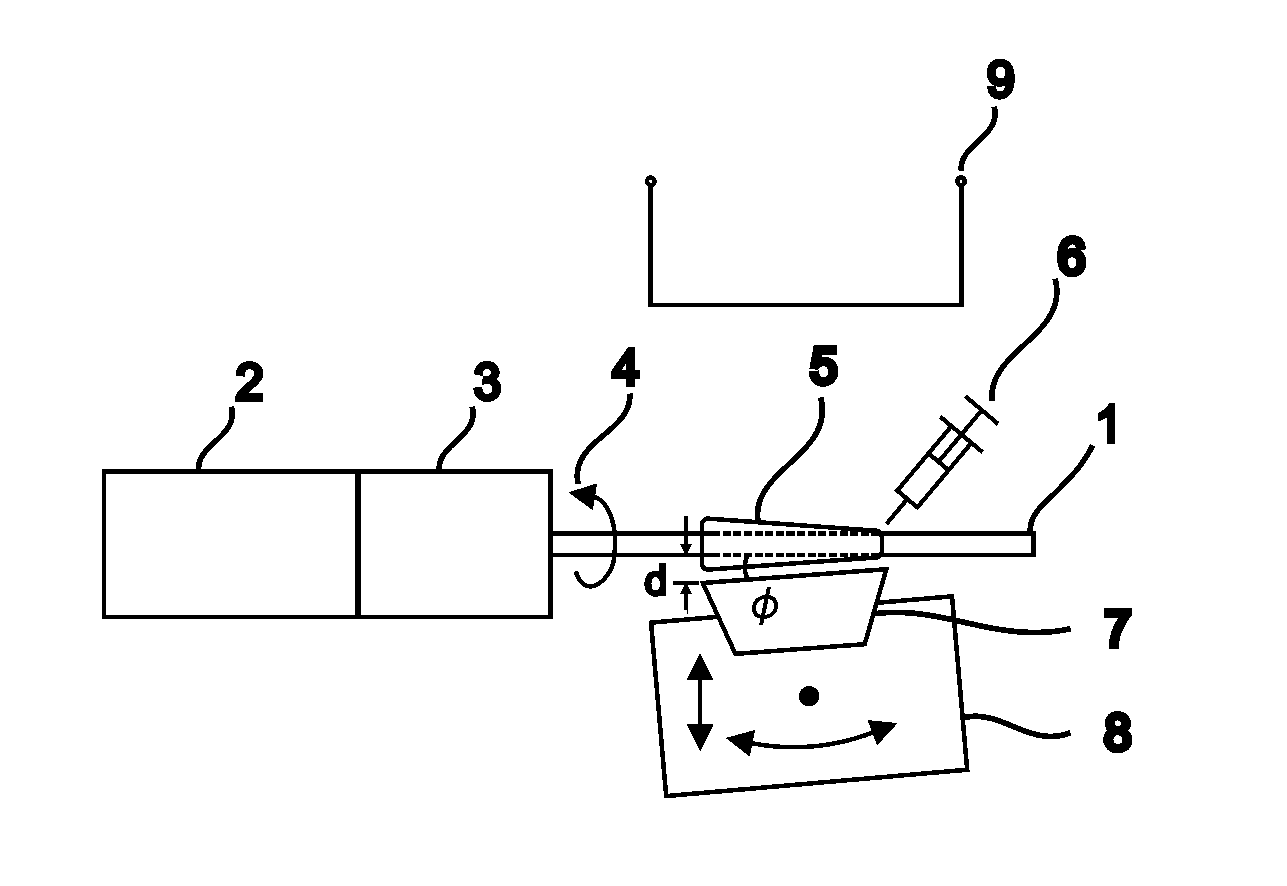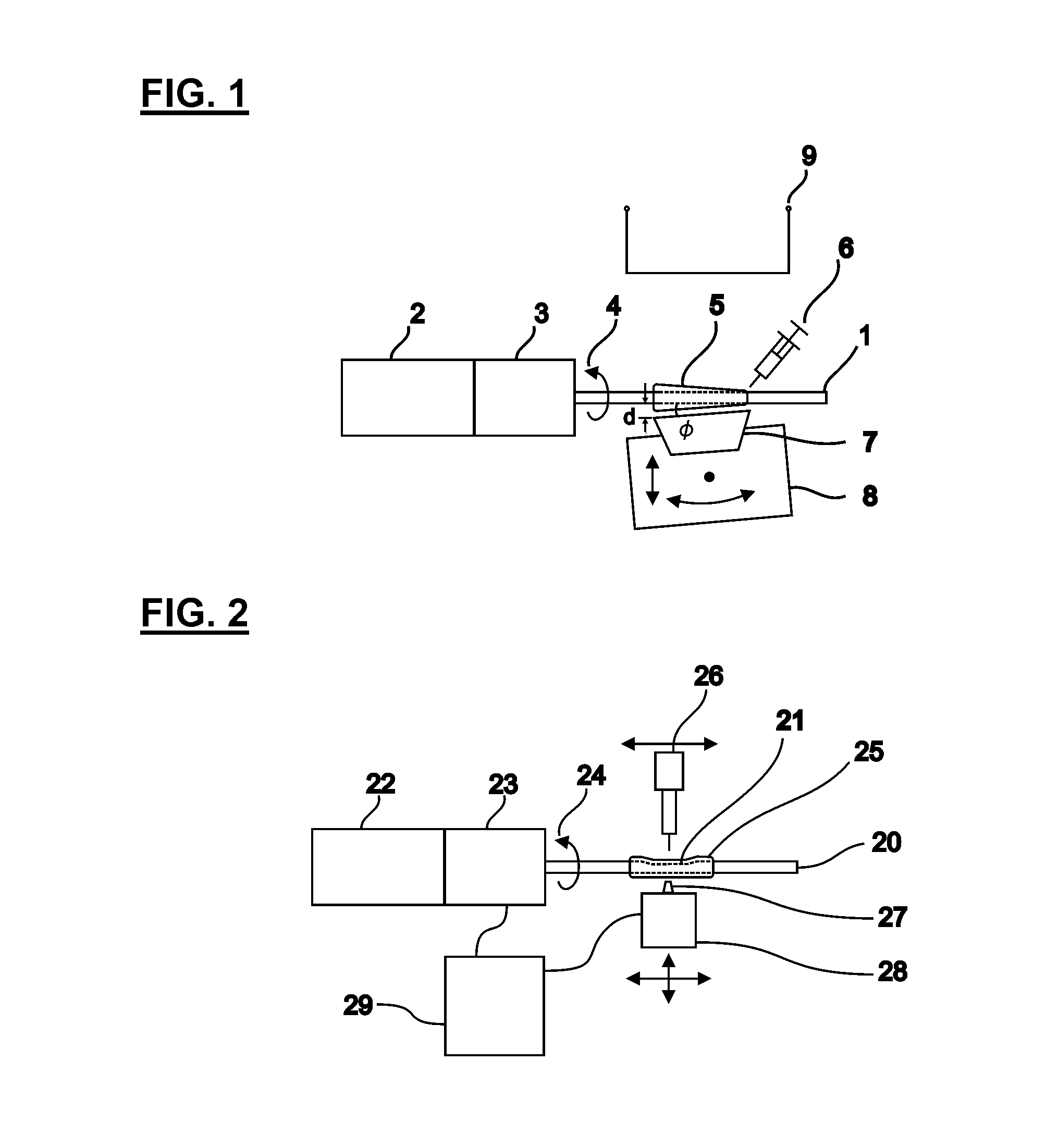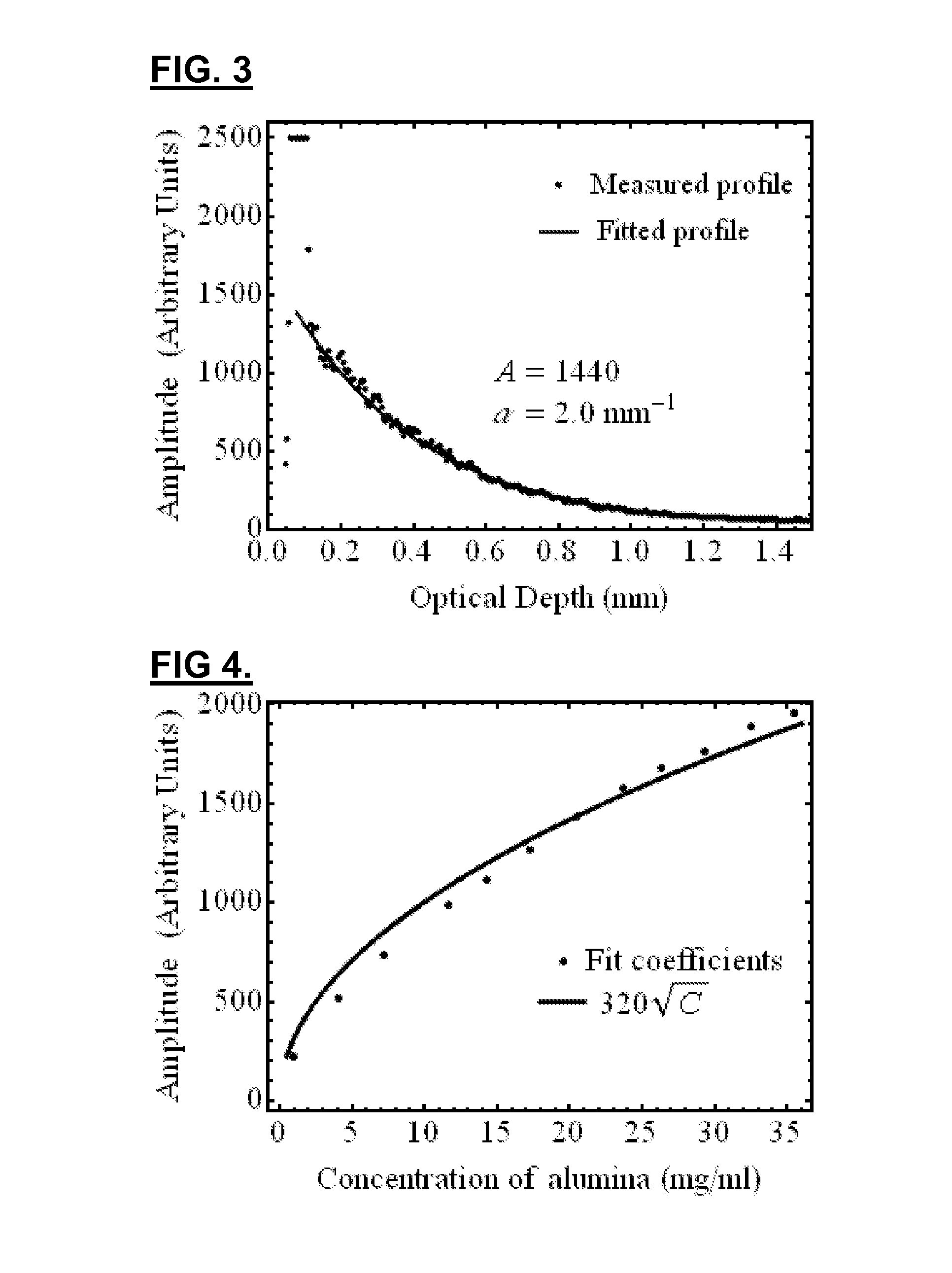Multilayered tissue phantoms, fabrication methods, and use
a tissue phantom and multi-layered technology, applied in the field of biomedical applications, can solve the problems of limiting some uses of phantoms, hard matrices, and lack of mechanical properties similar to soft tissues, and achieve the effects of less expense, efficient use, and reproducing geometrical deformation
- Summary
- Abstract
- Description
- Claims
- Application Information
AI Technical Summary
Benefits of technology
Problems solved by technology
Method used
Image
Examples
example
Blood Vessel Embodiment
[0147]In one embodiment, the method we provide is used to produce blood vessel phantoms to be measured with OCT systems. Both types of blood vessels, arteries and veins, are tubular organs composed of three distinct tissue layers: the intima, the media, and the adventitia.
[0148]In this embodiment, the layer materials are mixtures of powders in silicone. In order to mimic the mechanical properties, the silicone is a mixture of Sylgard 184 and PDMS. The required OCT backscattered amplitude for each layer is mainly provided by alumina powder. The optical attenuation is adjusted with carbon black as required. With such compositions, the blood vessel phantoms are durable over many years and are highly resistant.
[0149]The ratio of PDMS:Sylgard resin:Sylgard reactive to approximate the elasticity of the targeted tissue was determined experimentally. In this case, the mechanical behavior of a coronary artery is reproduced as a whole instead of for each layer separatel...
PUM
 Login to View More
Login to View More Abstract
Description
Claims
Application Information
 Login to View More
Login to View More - R&D
- Intellectual Property
- Life Sciences
- Materials
- Tech Scout
- Unparalleled Data Quality
- Higher Quality Content
- 60% Fewer Hallucinations
Browse by: Latest US Patents, China's latest patents, Technical Efficacy Thesaurus, Application Domain, Technology Topic, Popular Technical Reports.
© 2025 PatSnap. All rights reserved.Legal|Privacy policy|Modern Slavery Act Transparency Statement|Sitemap|About US| Contact US: help@patsnap.com



